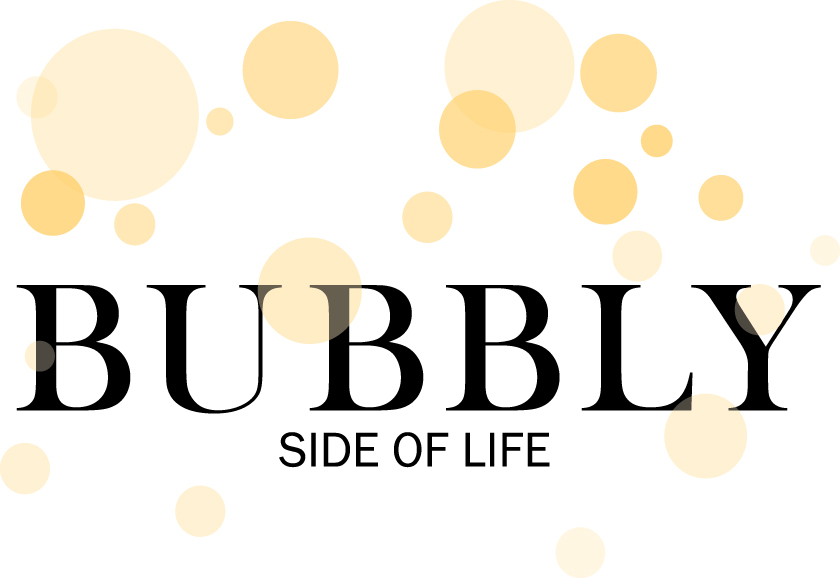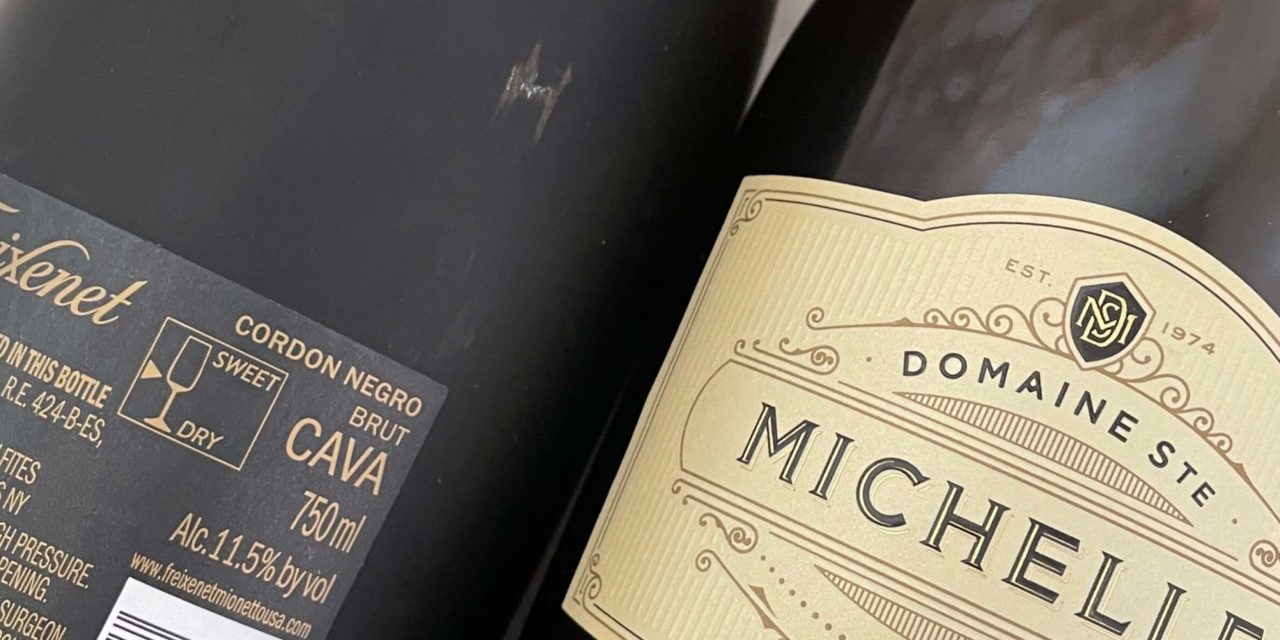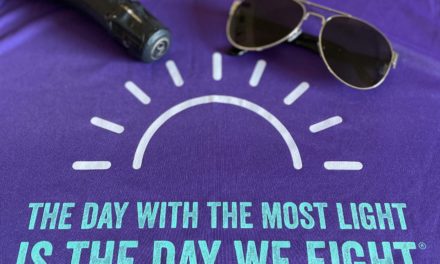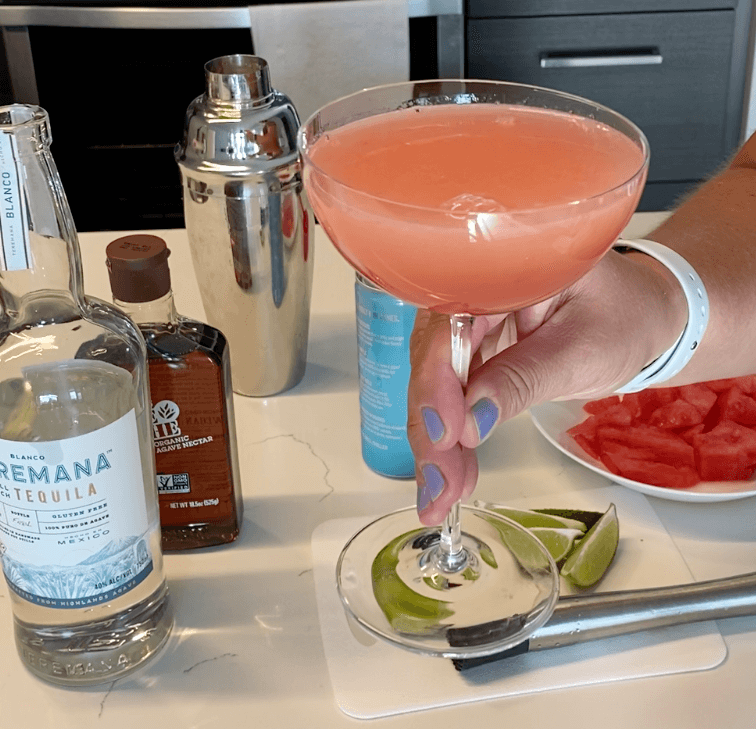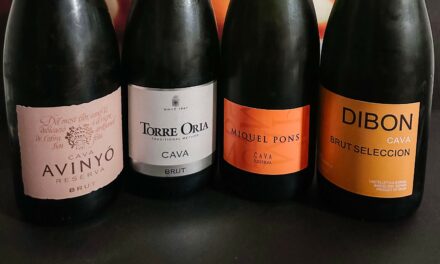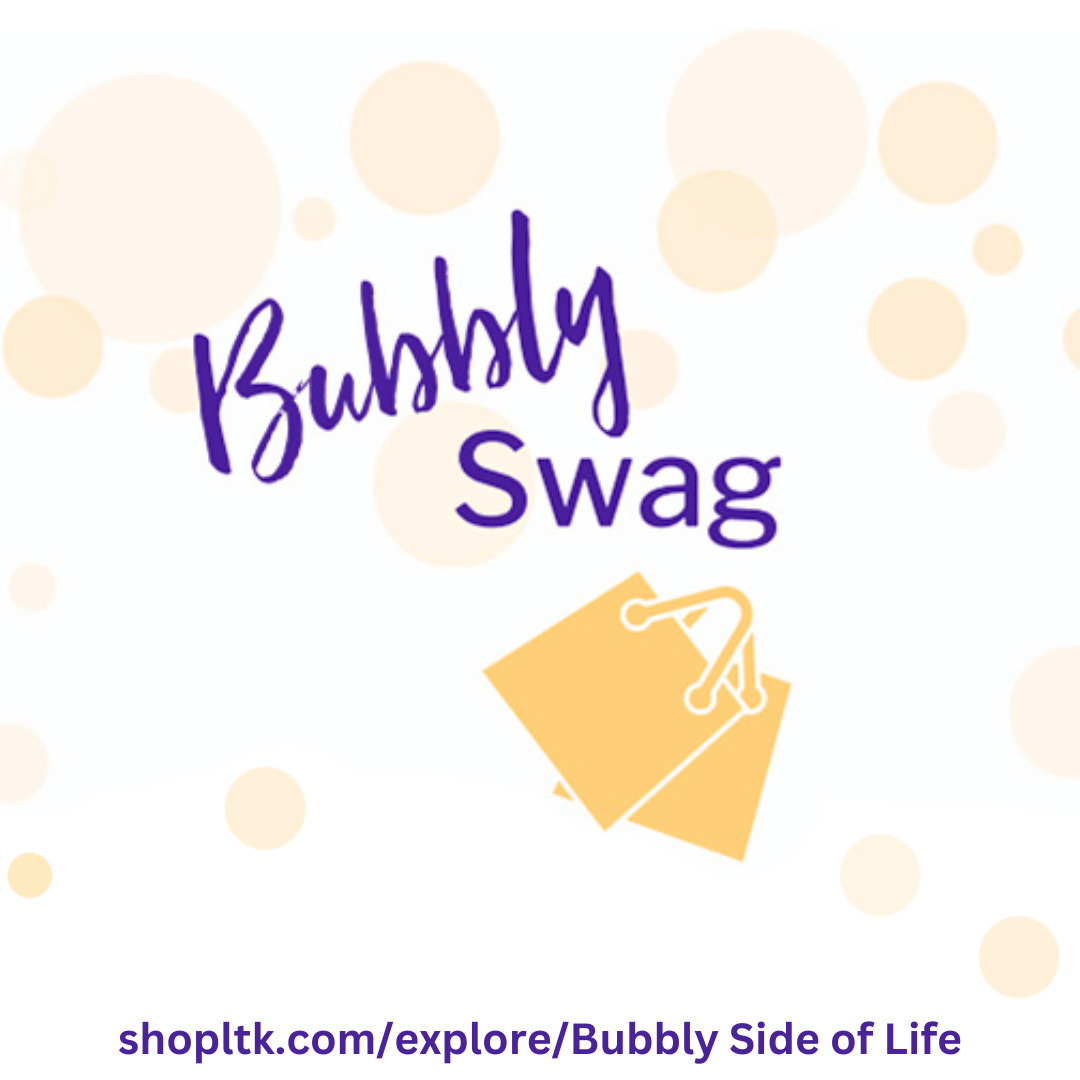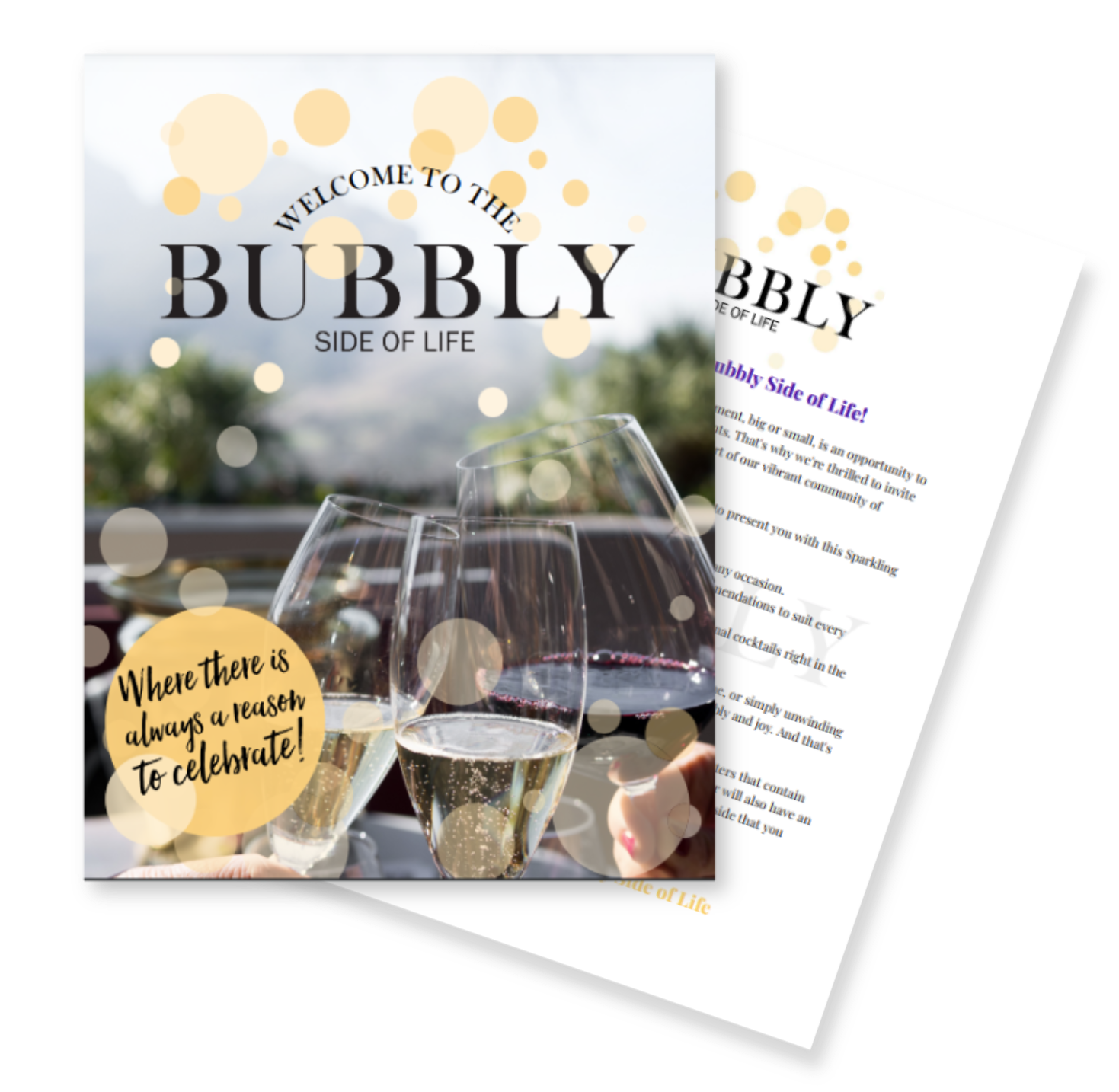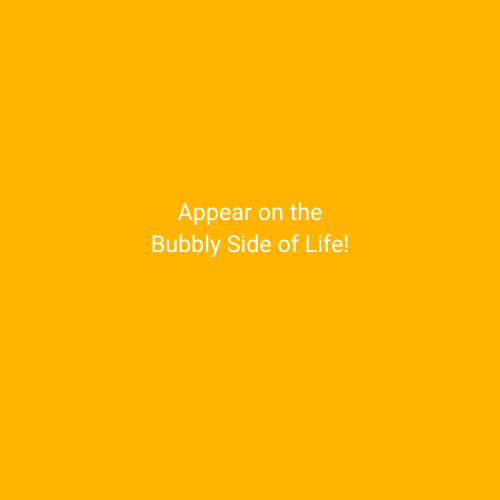It’s about time we talk about the terms used to define the sparkling wine sweetness in the different types of bubbly wine.
True of False: All champagne is sparkling wine, but not all sparkling wine is champagne? The answer to that is true. Any wine that has bubbles is a sparkling wine, the variation comes in when we talk about where and how it’s made.
Before we get into the different levels of sweetness, let’s chat about how each type of wine is made because unfortunately, defining the level of sweetness is not a simple explanation since each type of bubbly wine uses its own verbiage. And the different levels of sweetness also varies from type to type.
Sparkling Wines Defined
So, first things first, it’s important to understand that there are many types of bubbly wine out there. And depending on the region where it’s made and the method of how it’s made will define the type of bubbly wine that it is.
Today, we’re going to take a deeper dive into these 5 types of sparkling wine.
- Champagne
- Prosecco
- Cava
- Sparkling Wine
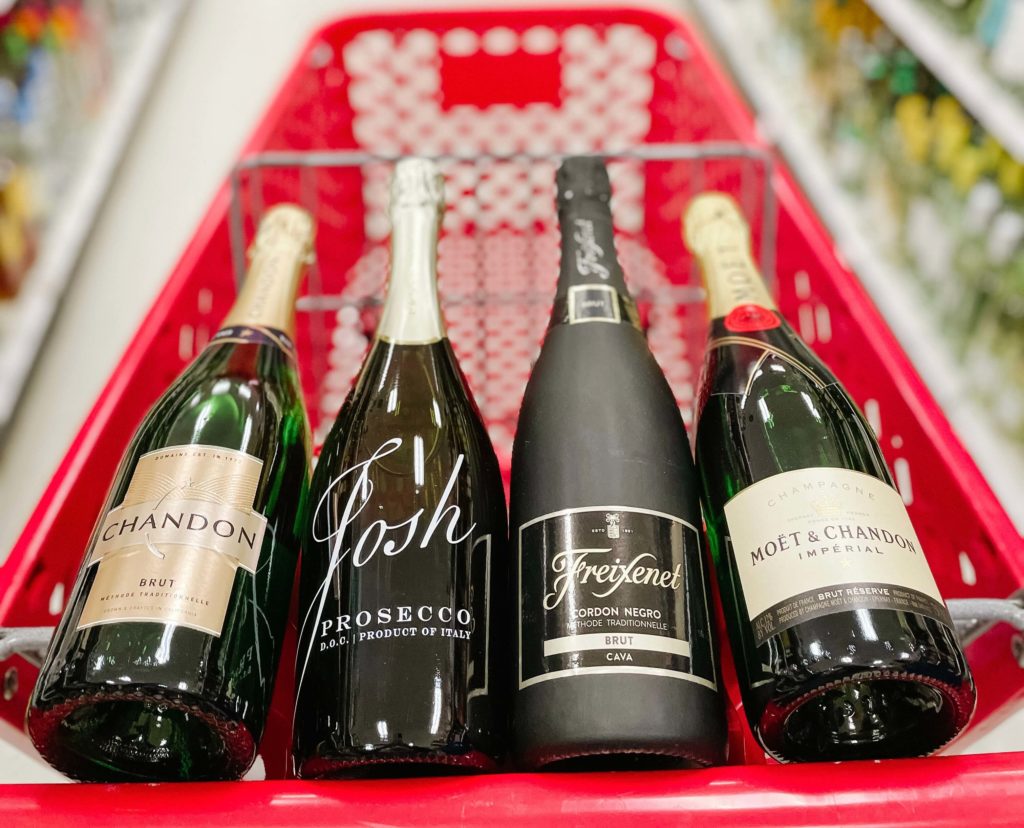
Champagne
Champagne is bubbly wine that is made in the Champagne region of France. In order to be called champagne, it must come from this region and adhere to strict protocols.
Champagne is made with three main grapes: chardonnay, pinot noir and pinot meunier. Champagne is a true labor of love as it is quite the lengthy process from harvest to the point in which you’re ready to pop the cork. It’s made in what used to be termed as the champagne method as the bubbles come from the second fermentation. This mean that the base wine is created as you would any other wine and then the magic happens during the second fermentation right in the bottle itself.
Cava
Cava is a sparkling wine from Spain (oh how I love Spain) and is often made in the same method, the traditional method. The biggest difference is the type of grapes they use. Typically, cava will be made with grapes more common to the area: macabeo, parellada and xarel-lo.
In order to be labeled as a cava, they also must adhere to strict protocols and regulations. When you pick up this bottle of Spanish sparkling wine, not only will you see the sweetness levels on the bottle of cava, but you will also see a term to refer to the aging process of the wine.
Cava is my second most favorite form of bubbly due to its price point and the fact that I love all things from Spain. (Can’t take the Spanish teacher out of me!)
Prosecco
Prosecco comes to us from Italy and is made using the primary grape, glera. The biggest difference is prosecco is made using the charmat method which means it happens in a tank. So, yes, it goes through a second fermentation but in a big tank and it takes a lot less time.
Sparkling Wine
If you have been around for a while, you know this is my go-to. I absolutely love sparkling wine for so many reasons.
Sparkling wine is any bubbly wine that is made outside of any of those regions mentioned above. Most of the time, sparkling wine is made using the same grapes and using the traditional method, but not always. Because there are less strict regulations, winemakers can be a little more creative.
And why do I love sparkling wine so much? Because it’s easily accessible and you can often times go visit the winery because it may just be a short flight away. And you can’t beat the price point compared to champagne.
Sparkling Wine Sweetness Terms Defined
As mentioned, not only does each type of bubbly have its own sparkling wine sweetness term, but also it’s own number of terms. For example, there’s a champagne sweetness scale and a cava sweetness scale. There are also sweetness levels for prosecco and of course, there are sparkling wine sweetness levels.
The other confusing part of the terminology is the bottle might say dry or semi dry and if you’re thinking in wine terms you’re probably thinking something very specific. But if sparkling wine terms, that bottle labeled dry or semi-dry, really means its on the sweeter side.
We made this cheat sheet for you to take next time you’re out shopping for your next bottle of bubbly wine.
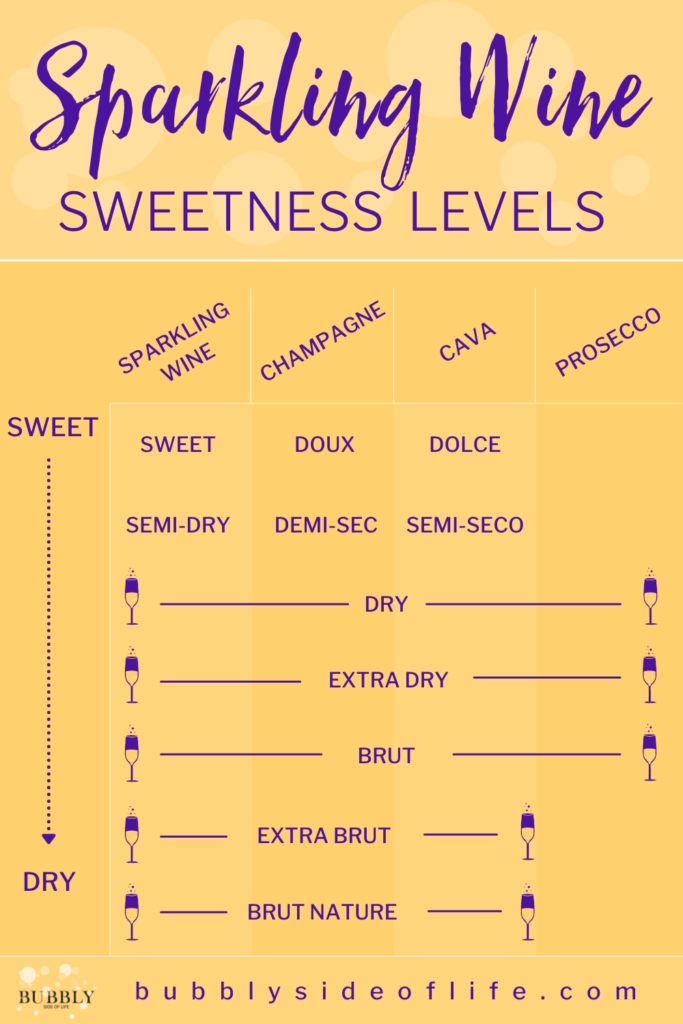
So, you may be perusing the champagne aisle seeking out that perfect bottle of champagne for a special occasion. And you pick up two different bottles, one with the label “brut champagne” and one with the label dry champagne and the bottle that says “dry champagne” is actually sweeter than the bottle that says “brut champagne”.
Now to make things even more confusing, I was grabbing some bottles of Freixenet cava for a very special girls’ night in and we needed these specific bottles for a craft. I got home and realized that I grabbed one that said extra dry which would typically mean it’s on the sweeter and I was bummed since none of us like sweet wines. And then I turned it over and looked at the back wine label. To my surprise, the graphic shows it as actually more on the dry side.
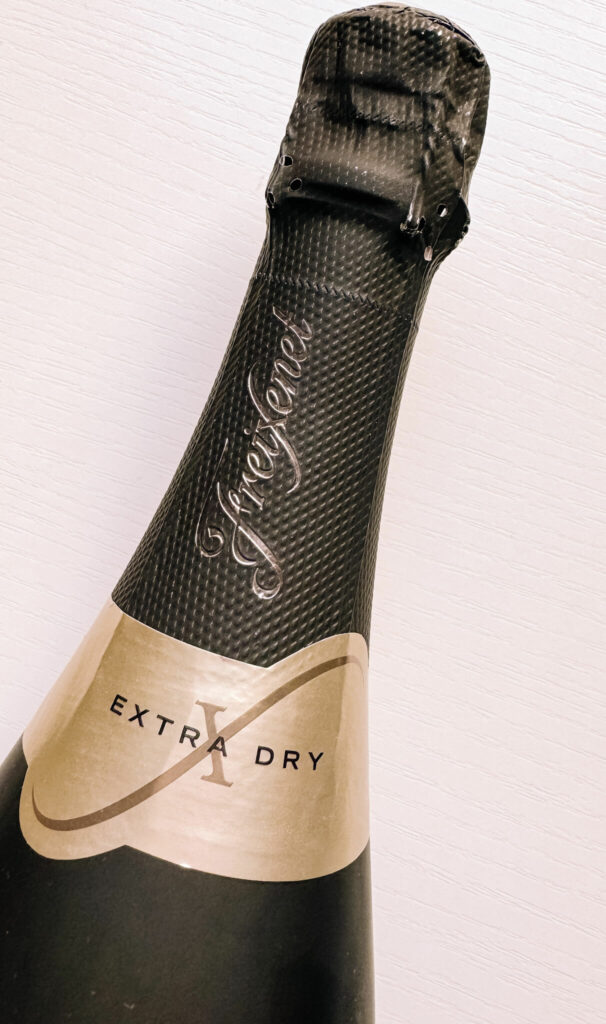
Considering extra dry is one step up or one step past brut on the sweetness scale, this is accurate. And because there is a range in the amount of residual sugar that can be added to make this extra dry, this would indicate that it’s on the lower side.
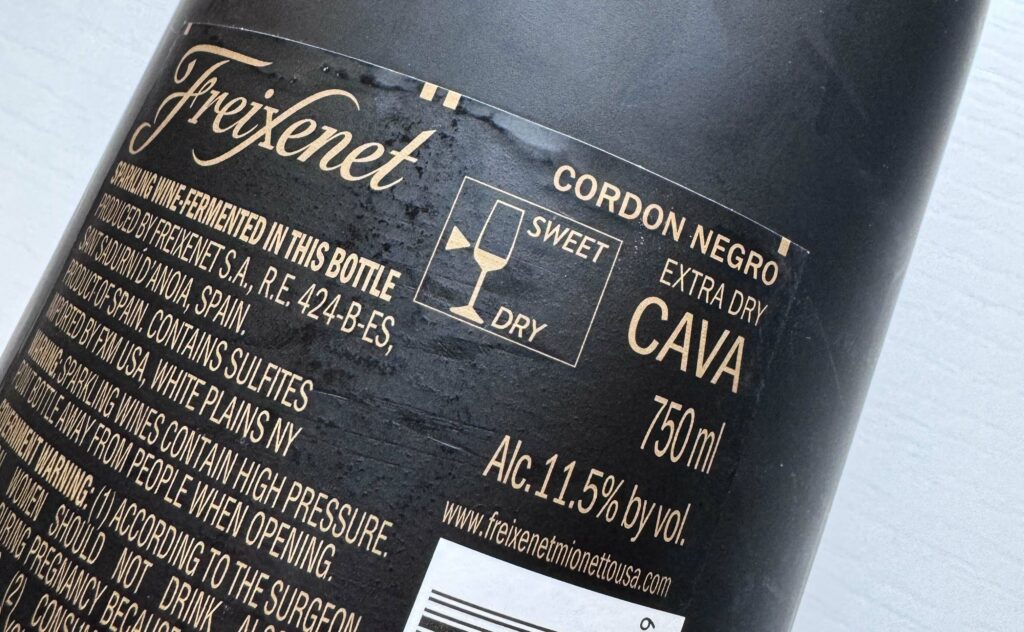
TIP: If you’re hosting any special occasions and are focused on wine and food pairings, be sure to reading all the wine labels very carefully. The trickiest is picking out the dessert wines. And the key to pairing dessert wines (still or sparkling) is they need to be sweeter than your dessert. When you’re reading the wine labels, if there’s a graphic, pay attention to that for a more accurate reading on the level of sweetness.
Sparkling Wine Sweetness Meaning
These sweetness terms are simply referring to the grams of sugar or residual sugar levels in each bottle of wine. This residual sugar is the added sugar that the winemaker adds once the bottle has finished its secondary fermentation and has been disgorged and is ready for you to enjoy.
Words like ‘brut’ and ‘brut nature’ are simply referring to the level of sweetness for that the particular bottle of bubbly or another way to put it is how much sugar has been added to the bottle upon disgorgment.
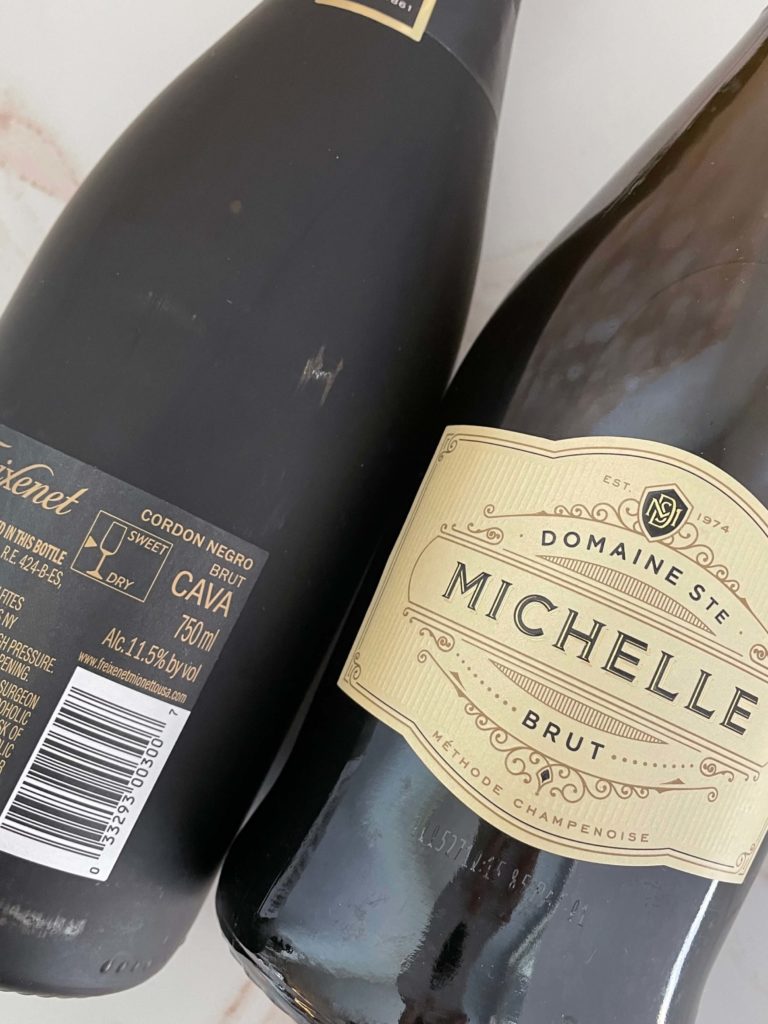
I, for example, am not a fan of very sweet drinks, no matter if it’s a glass of bubbly, a bubbly cocktail or a glass of still wine. So you will always see me choose a bottle of brut, extra brut or brut nature.
And while I don’t enjoy drinks with a hint of sweetness, I know others love the sweet taste. Often what you’ll see me do especially when I am creating bubbly cocktails is bring a variety of bubbly to top the cocktail. I will bring a variety of the sweetest sparkling wines (dry, extra dry, etc.) and brut sparkling wines so that hopefully, there’s something for everyone to enjoy.
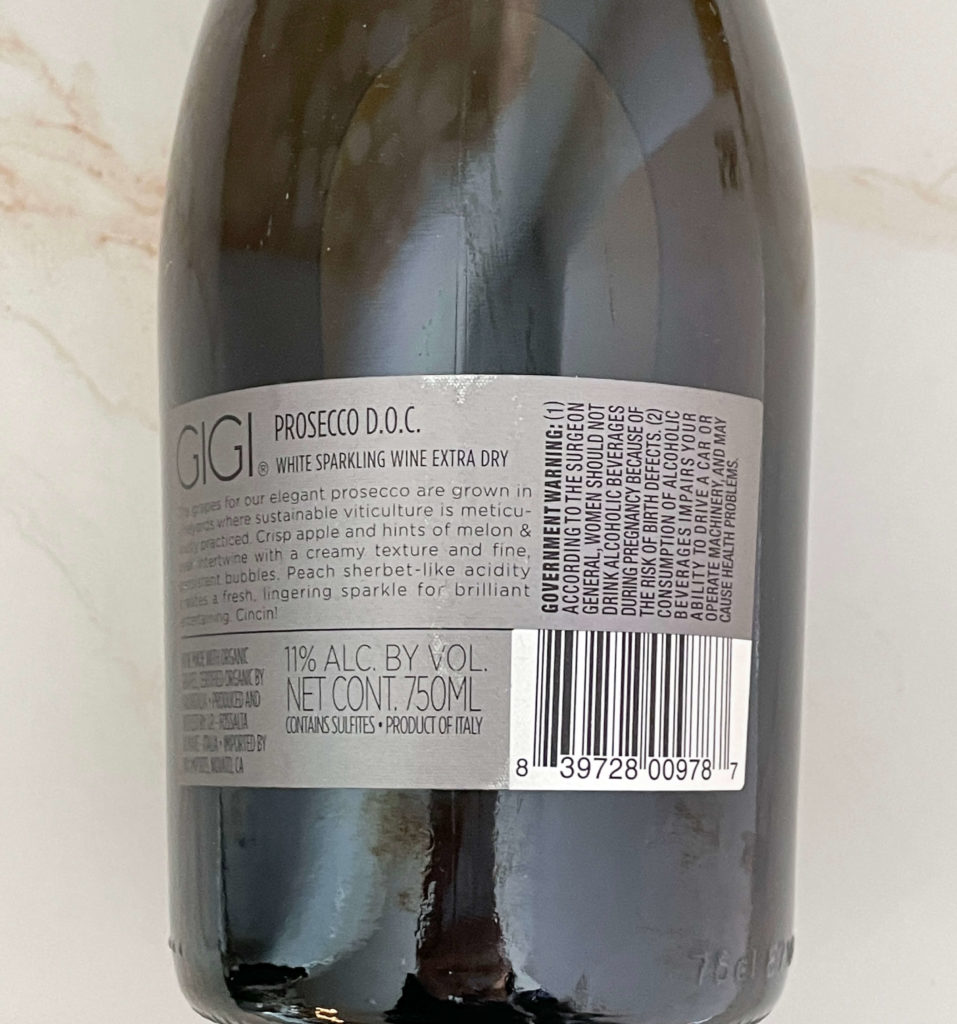
We wrote an entire post explaining how many grams of residual sugar are added to each of the different sweetness levels so if you are concerned about the amount of sugar you consume and are wanting to make sure you grab a bottle with less sugar, check it out.
Once you identify how sweet you like your bubbly, you’ll be able to choose bottles based on that verbiage. Now, keep in mind other factors may influence how much you like that particular bottle, but this will give you a good starting point.
Want More?
Are you interested in learning more about the bubbly wine you’re drinking? We’ve got you covered.
- If you’re curious how many calories are in your favorite glass of bubbly, check out this post.
And if you want to see the bottles we’re currently popping and loving, be sure to follow us over on Instagram as we typically introduce a new bottle every week.
Did this help explain to decipher that bubbly wine label? What other topics would you like us to cover?

